THE FIFTH ELEMENT. Besson’s Multi-Layered Sci-Fi Explained

People are trained from a young age in messianic themes, revealing that we are all products of belief systems centered around the story of one of us, who is not quite like the rest. From the martyrdom-imbued “forty and four” to whispers about a king returning from a mythical island, humanity always keeps an ultimate instance ready, one who wields a bow and rushes into the fire with a scream. The chosen one, as an abstract value, is embodied in a specific person with divine traits. Luc Besson also adheres to this vision, inviting the viewer into the crafted world of his film.
The Fifth Element: Prologue
The prologue of The Fifth Element begins in the Egyptian desert. Its first minute looks like a fragment of a documentary film: the same slightly grainy film tape, camels led by young boys enthusiastically shouting something in an incomprehensible language.
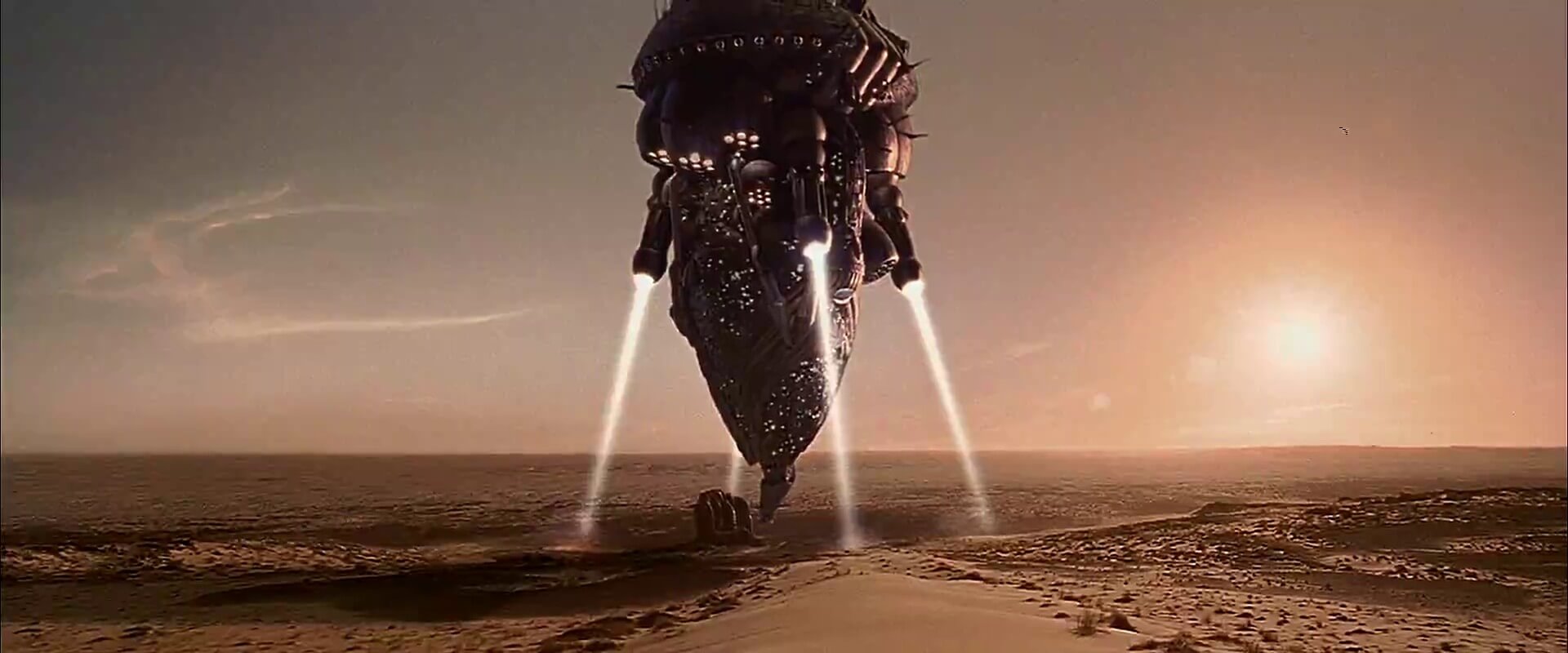
The image, by similarity, influences the viewer, wanting them to believe in the authenticity of the depicted events. From the sun-drenched desert, one of the boys runs into the interior of a stone structure, where early 20th-century Egyptologists work on a prophecy written in hieroglyphs. The reference to this particular civilization seems to be a deliberate move. Although the beginnings of agricultural human culture are located further east, Egypt remains a symbol of the oldest civilization.
The desert space possesses a timeless and spaceless category. The landscape seemingly doesn’t change; the loose sand remains the same for humans, unable to grow and die like grasses or mountain vegetation. Only night and day remain, which say little about the passing years. The space is undefined, without points of reference except for the temple, which remains the desert’s center, tasked with information exchange and communication. It is also a place for storing weapons that protect against periodically recurring evil. Here, priests meet with divine beings from whom they receive instructions—the temple is a link between heaven and earth, an axis mundi.
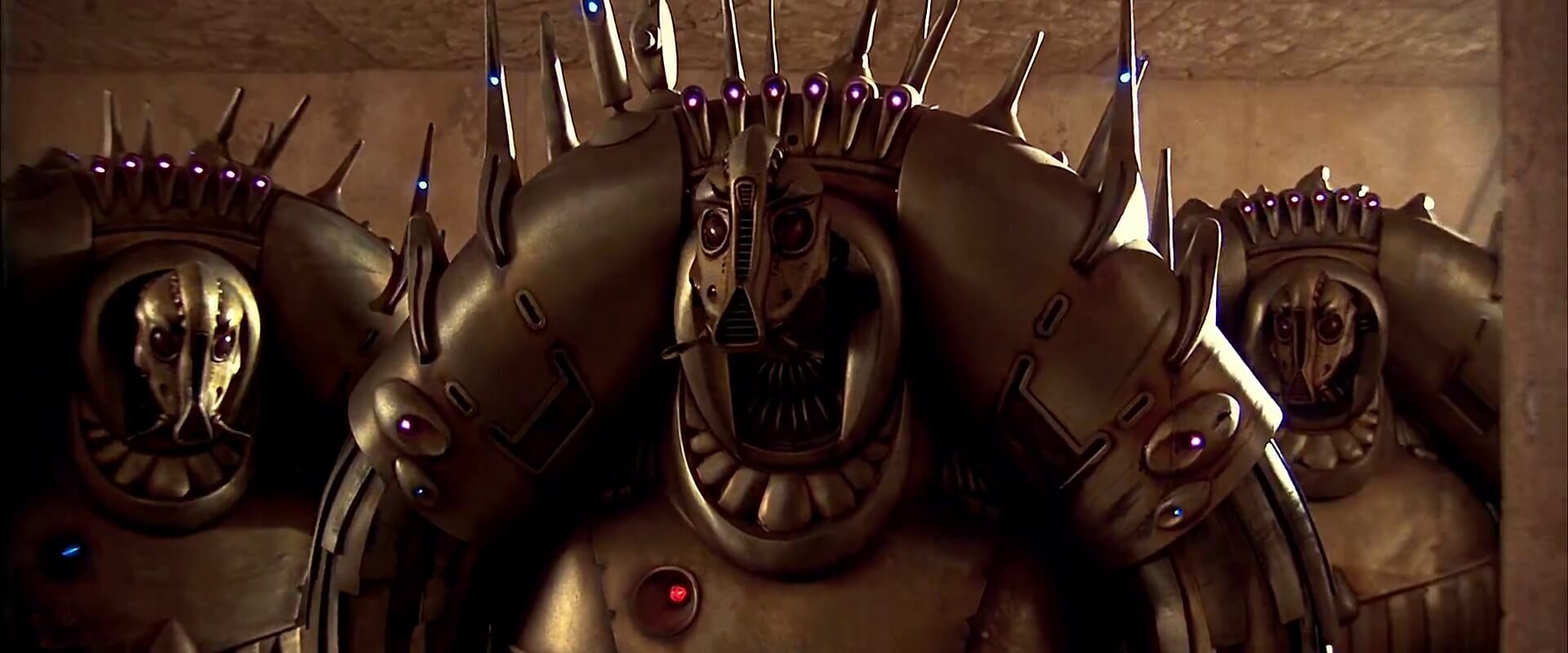
Hieroglyphic signs, the sacred writing of Egypt once used by priests, are widely known. To this day, forum participants debate whether the hieroglyph images from Abydos, popularized by UFO and New Age enthusiasts, depict extraterrestrial machines.
In Luc Besson’s film, these suspicions turn out to be a truth known only to ancient priests. Beings with golden, smooth surfaces resembling robot armor arrive on Earth. The golden color remains in syntagmatic relation with the Sun, associated with divinity. Gold also indicates a precious metal, transferring this value from the golden color to the being bearing it. The Mondoshawans are valuable to the planet because of the knowledge they impart. Humans believe these beings to be divine, thus ambivalent—they help but won’t hesitate to kill (as evidenced by the death of an Egyptologist who could harm their cause). The concept of time is irrelevant to them. One Mondoshawan states, Time is of no importance, only life.
Egyptologists try to explain the meaning of the triangle, the serpent, and the small figures carved on the temple walls. The biggest surprise is that the surroundings and the shape in which the writing is arranged blur the truth: hieroglyphs are a frame for the signs the Egyptologist speaks of. The prophecy itself is written in something aspiring to the less ornamental hieratic script.
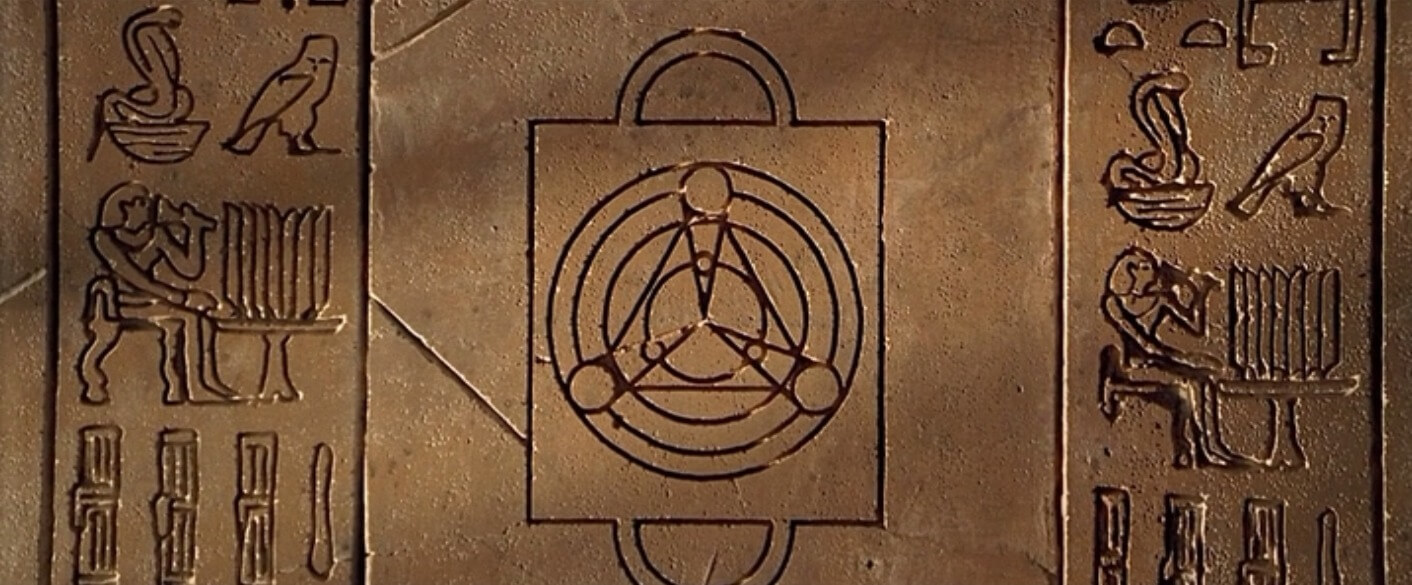
The triangle is associated with light, divinity, fire and water, and balance. It is equilateral and symbolizes perfection, forming cosmic foundations, a symbol of knowledge utilized by the Catholic religion in depictions of God. There is an allusion to the Pythagorean tetraktys, whose triangular number is ten. Pythagoreans considered it sacred. Sextus Empiricus explained this belief: By the relations of these four numbers, one comprehends both body and incorporeal things, and from these everything arises. Aristotle, commenting on the problem of ten, wrote that it is a principle both as matter for things and as properties and states. In the film, the triangle legitimizes the legend of the five elements, referring to actual ancient symbolism.
The serpent, in its primary sense, is connected with the element of water and emergence, as well as a shield, as confirmed by Medusa’s head placed on Aegis by Athena or Ophion coiling around the circular shape—the “shield” of the universe. The serpent may also be associated with the caduceus, the staff of healers, entwined with two serpents. Conversely, the reptilian nature of the animal places it on the opposite axiological pole, condemning it to eternal damnation.
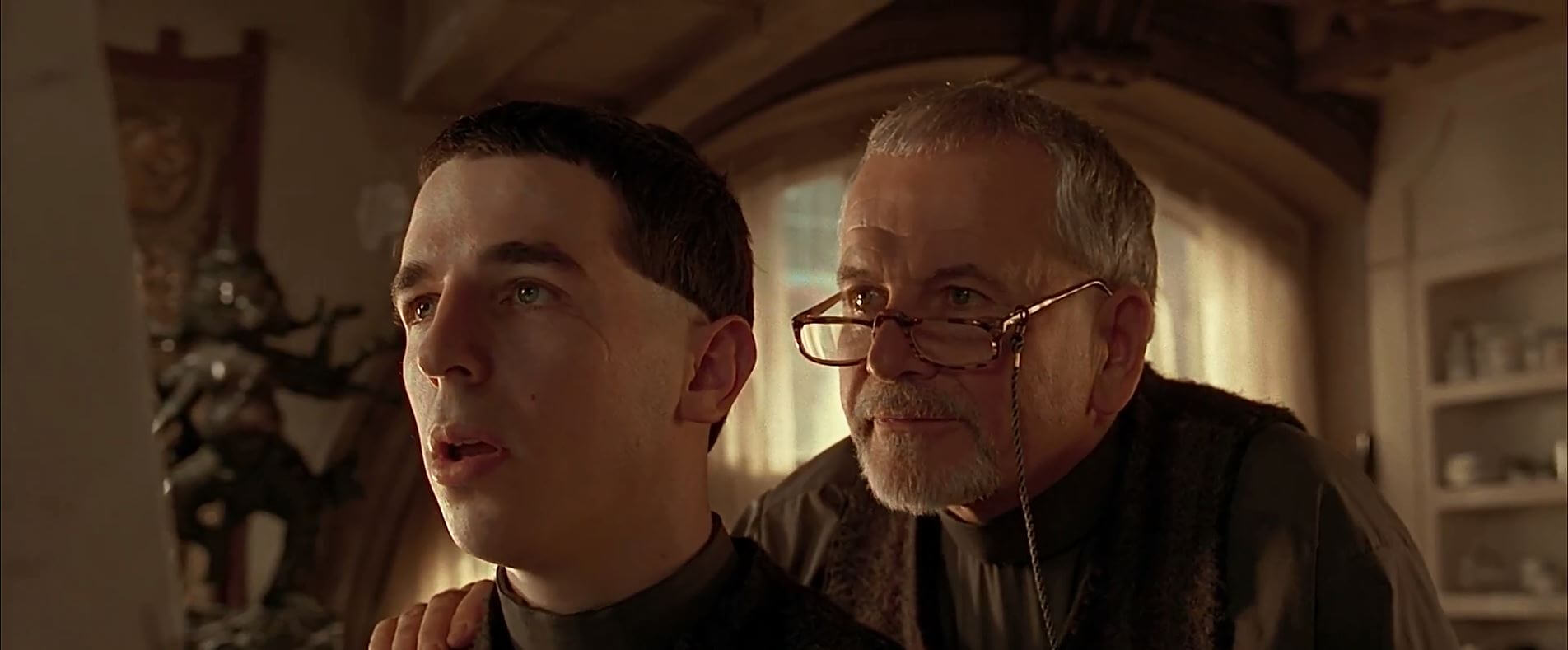
A triangle of inverted human figures can be seen as a herald of chaos and destruction. The prophecy predestines humanity to a recurring fight against evil, leaving no choice but to prepare for the battle. The prophecy that dooms Earth to an attack by evil every 5,000 years exemplifies strong magic, with the viewer realizing its effect in the depicted world.
The prologue concludes with the Mondoshawans fleeing the temple with the stones and the fifth element sealed in a sarcophagus. They promise to return when Earth faces extinction again. Until then, priests must pass on the knowledge and memory of what is certain to happen.
The Fifth Element: Characters
Father Vito Cornelius is a representative of the order in the times when the main protagonist, Korben Dallas, lives. He embodies divine wisdom. He explains to the president the origin of the fiery planet that consumes everything in its path. Initially, the president does not believe Father Vito, but a conventional attack on the planet makes him realize his powerlessness. The priest’s story borders on fantasy. He can only support his thesis with an old book, but the authorities are lost and helpless, so they do not demand scientifically proven evidence. Everyone, including the viewers, believes his words. The priest legitimizes the information with himself, being a metonymic representative of divine knowledge to which humans turn when all else fails.
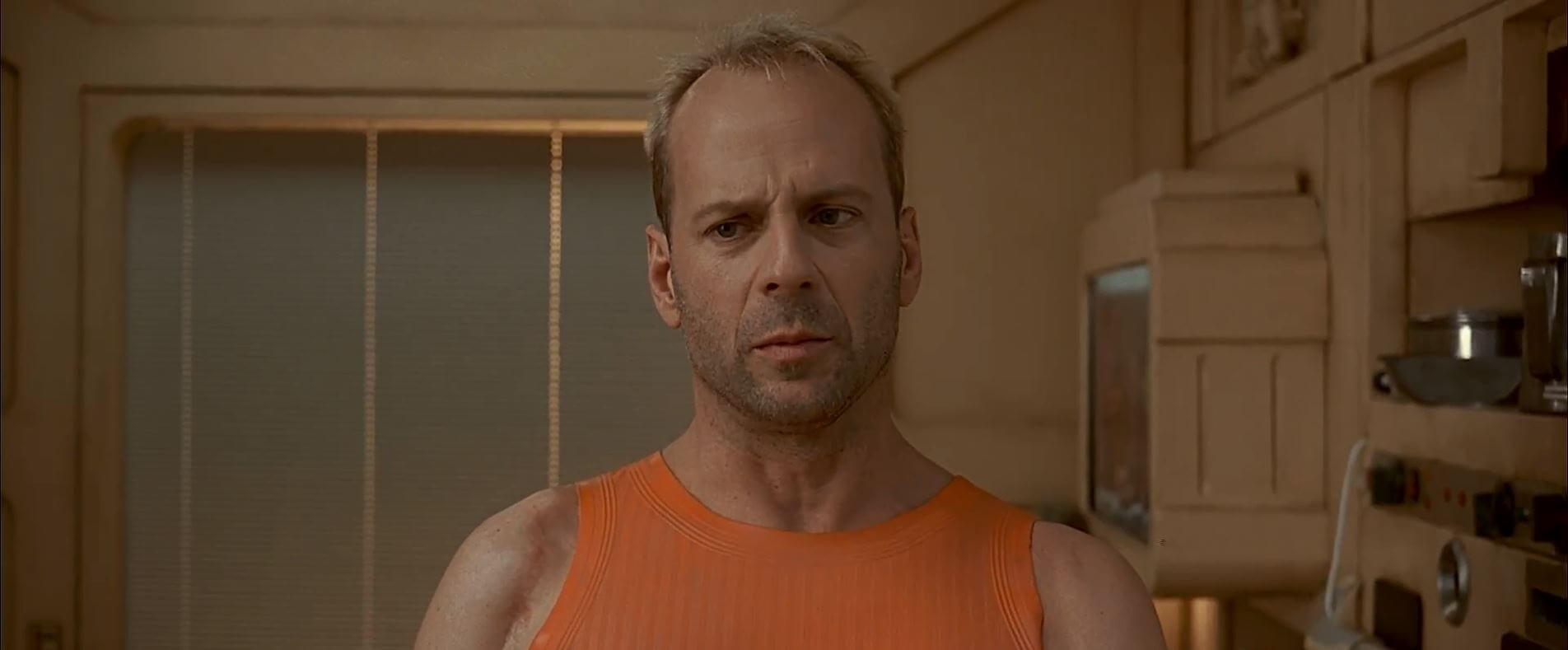
The main character of the film is Korben Dallas, a former commando now working as a taxi driver in 23rd century New York. He lives with a white cat since his beloved left him. He declares his search for the perfect girl or solitude. Thus, he is a romantic hero, a modern-day knight ready to stand for good and love.
Besson’s story revolves around the theme of five elements—four elements and a human, completing this natural order.
The titular fifth element is a perfect woman. After a spaceship crash, only her hand remains, but modern technology reconstructs her genetic code, rebuilding her body and bringing her back to life. A scientist explains the reactor’s operation, saying: It’s the last phase. Solar atoms bombard cells, forcing the body to react defensively, producing skin. The regeneration of skin in the absence of any epidermis is called healing by granulation, which does not require external energy. The creators here refer to the sun, equating it with the day. The beginning of the day is a time of awakening, with sunlight having an invigorating effect on humans. The machine’s operation is described scientifically, legitimizing the invention’s truthfulness and seriousness.
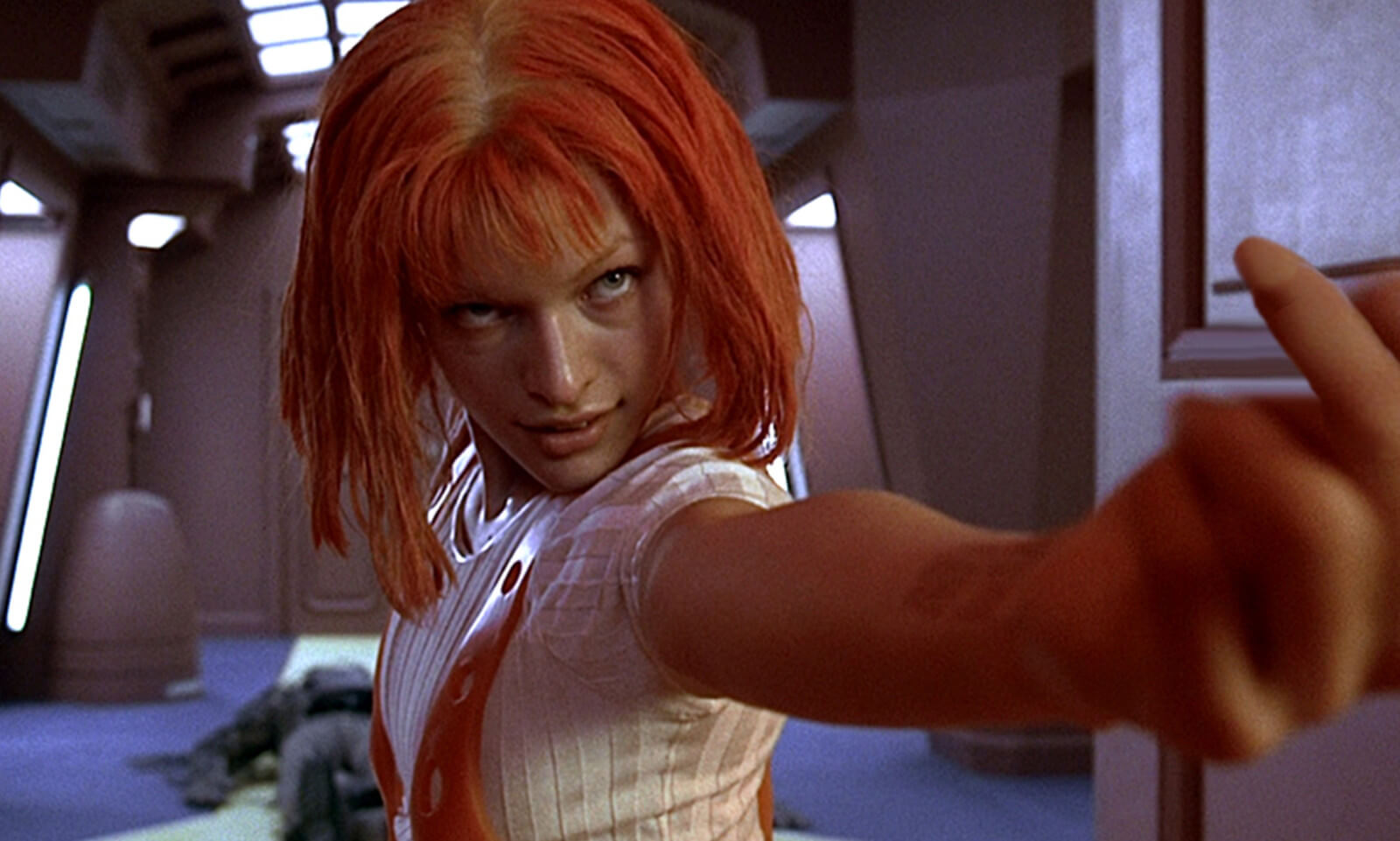
The scientist is identified as such because he uses specialized language, guides through the laboratory, and, most importantly, wears a white lab coat. These standards seem unchanged in the future. The coat, associated with experiments and scientific fields, transfers its meaning to the person wearing it.
The reactor appears again in the epilogue. Naked, kissing inside it, Korben and Leeloo herald a rebirth, this time as a couple. Love is a sign of well-being, healing the soul. The soul, in turn, directly interacts with the body. Physical wounds from the battle are healed because a healthy soul is perceived as a sign of a healthy body. The metaphor is wrapped around a scientific creation—the reactor.
Leeloo, as the fifth element, an additional force, resembles the idea of Umberto Eco—likening the human body to the world. She is an element of Earth. Together with the other elements, she forms a weapon that will protect humanity. However, society has cemented another image of a person—as a half seeking its other part. The myth of love as wholeness influenced the story’s conclusion. Leeloo will defeat evil if she becomes whole, thus restoring order within herself. The weapon only activates when she hears a declaration of love and kisses Korben. Love is defined in their conversation as one of the good things on Earth worth saving. Essentially, love remains an icon of goodness. For Leeloo, it is the end of doubt caused by war images. Goodness, intertwined with awakened love in the heroine, radiates brightness and, with the help of the four elements, defeats evil.
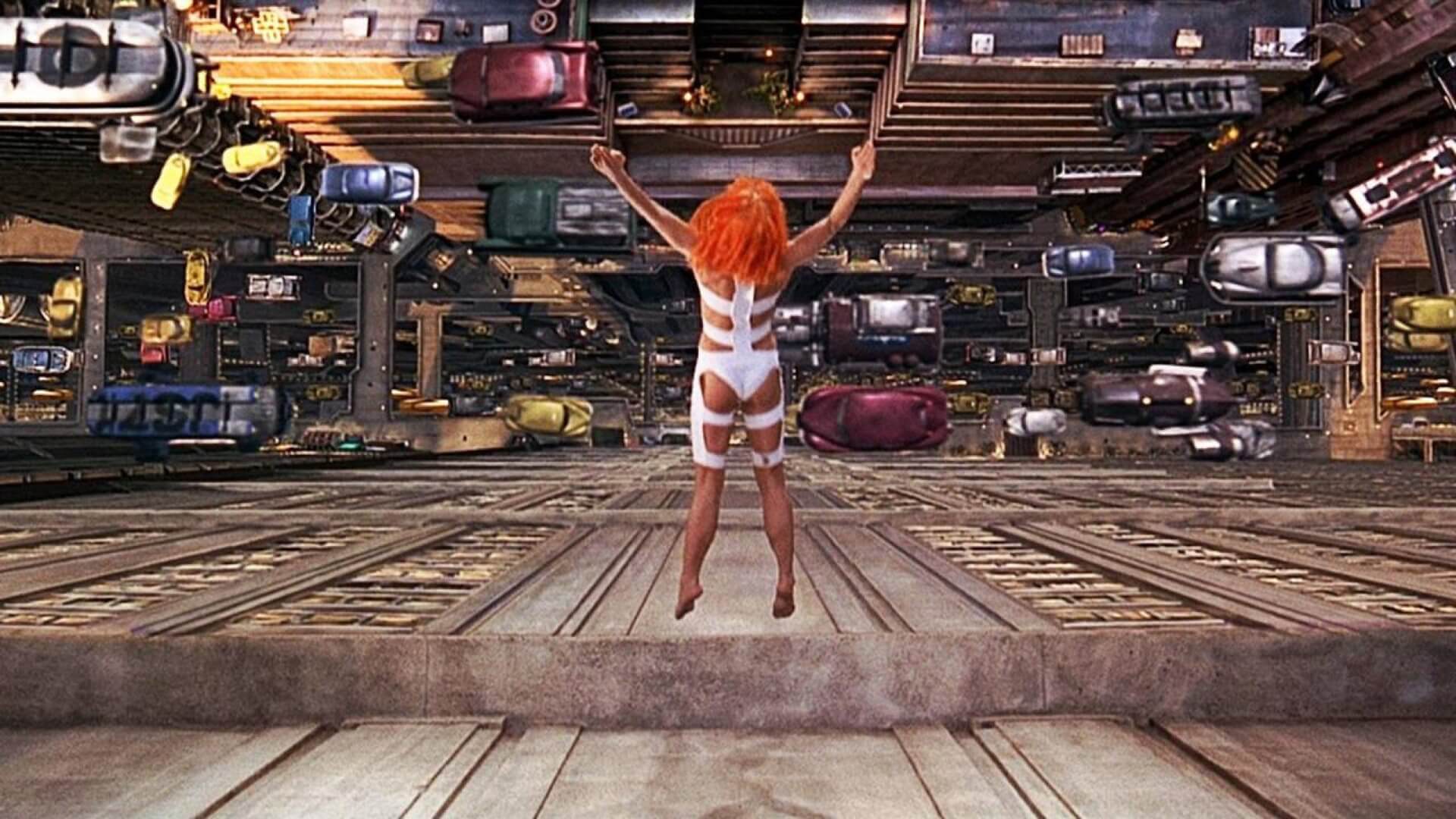
The main heroine is not an Earthling descendant but a perfect being created by the Mondoshawans. She does not speak a human language, using what the priest calls a divine language, incomprehensible to modern people. When Leeloo wakes up in the NucleoLab in New York, General Staedert approaches her and says, If you want to get out, learn to communicate first. Language is identified with humans, distinguishing them from other beings. This is most evident in the scene where Korben introduces himself and asks the girl’s name. She responds with a long, unintelligible string of sounds.
– Nice. Is that all your name? Do you have… any nickname?
– Leeloo
– Very nice. Korben – Leeloo. Leeloo – Korben

